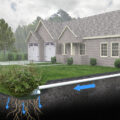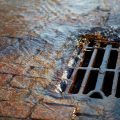What are storm water drains and what do they do?
Most people are familiar with the storm drains that are located in the street gutters. These drains are designed to collect rainwater and direct it away from homes and businesses to prevent flooding.
However, stormwater drains are not just limited to the street gutters. There is an extensive network of storm drains, pipes, and culverts that are designed to collect and convey stormwater runoff from various sources, including rooftops, parking lots, and streets.
The stormwater drain system is an important part of a community’s infrastructure that helps to protect homes and businesses from flooding.
How do stormwater drains work?
Storm drains are usually connected to a system of underground pipes, which carry the water away from the road and into a nearby body of water. In urban areas, the water may be discharged into a lake or river. In more rural areas, the water may be absorbed into the ground.
Storm drains are usually located at the lowest point in an area, so that water will flow into them naturally. They may also be equipped with a grate or screen to catch any debris that could clog the system.
When a storm drain is working properly, it can help to prevent flooding and erosion and can protect property and infrastructure from damage.
How can you help keep storm water drains clean?
Most people are familiar with the storm drains that are located in the street gutters. These drains are designed to collect rainwater and prevent flooding. However, many people do not know what happens to the water after it goes down the storm drain.
The water that flows into storm drains is not treated before it enters our waterways. This means that any pollutants or debris that are carried by the water can end up polluting our lakes, rivers, and oceans. Stormwater can also pick up harmful bacteria and viruses, which can pose a health risk to people and animals.
There are a few things that you can do to help reduce pollution from stormwater. First, you can make sure that your own property is not contributing to the problem. This means picking up any litter, leaves, or grass clippings that you may have. You should also avoid using chemicals, such as fertilizers and pesticides, on your lawn or garden.
If you see something that is polluting stormwater, you can report it to the proper authorities. You can also help to spread the word about the importance of protecting our waterways from pollution.
Storm water drains are an important part of our drainage system, but it is important to remember that they should not be used as a dumping ground for pollutants. By taking a few simple steps, we can all help to keep our waterways clean and safe.
What are the consequences of not having storm water drains?
In many parts of the world, stormwater drains are a vital part of the infrastructure. They are designed to collect and channel rainwater away from built-up areas, to prevent flooding and property damage.
Without storm water drains, the rainwater would pool in the streets and flood homes and businesses. In addition, the standing water would be a breeding ground for mosquitoes and other pests.
There are a number of consequences that can result from not having storm water drains, both for our property and for the environment. To avoid these consequences, it is important to make sure that stormwater drains are properly designed and maintained.











